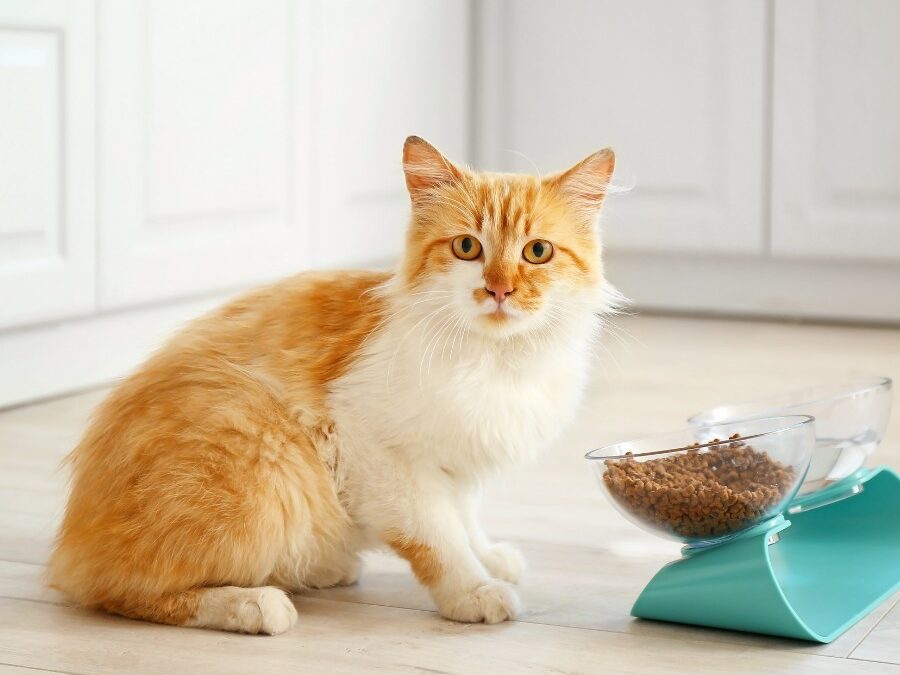1. Chocolate
Chocolate tops the list of toxic foods for both dogs and cats. It contains theobromine and caffeine, substances that pets cannot metabolize effectively. Dark chocolate and baking chocolate have the highest levels of these compounds and are the most dangerous.
Symptoms of chocolate poisoning: Vomiting, diarrhea, rapid breathing, increased heart rate, seizures, and in severe cases, death. Even a small amount of chocolate can be harmful to pets, so keep it far out of reach.
2. Onions, Garlic, and Chives
Allium species—including onions, garlic, leeks, and chives—are toxic to dogs and cats. These foods can damage red blood cells, leading to anemia. Whether raw, cooked, powdered, or dried, they pose a risk.
Symptoms of allium poisoning: Weakness, lethargy, pale gums, reduced appetite, and reddish or brown urine. Symptoms might not appear immediately and can develop over a few days.
3. Grapes and Raisins
Grapes and raisins can cause acute kidney failure in dogs and, to a lesser extent, cats. While the exact toxic compound is unknown, even small amounts can lead to serious health issues.
Symptoms of grape or raisin toxicity: Vomiting, diarrhea, loss of appetite, lethargy, and signs of kidney failure, such as increased thirst and urination.
4. Xylitol
Xylitol is a sugar substitute commonly found in sugar-free gum, candies, baked goods, and some peanut butters. It causes a rapid release of insulin in dogs, leading to a dangerous drop in blood sugar levels. It may also cause liver failure.
Symptoms of xylitol poisoning: Vomiting, loss of coordination, seizures, and in severe cases, liver damage and death. Cats are less commonly affected but should still avoid xylitol.
5. Alcohol
Even small amounts of alcohol can be dangerous to pets. Alcohol affects pets’ liver and brain similarly to humans but has a much stronger impact due to their smaller size and different metabolism.
Symptoms of alcohol poisoning: Vomiting, diarrhea, difficulty breathing, tremors, and low body temperature. In severe cases, alcohol poisoning can be fatal.
6. Avocado
Avocado contains a substance called persin, which can be toxic to dogs and cats in large amounts. While the flesh of the avocado is less dangerous, the pit, skin, and leaves contain higher concentrations of persin and are choking hazards as well.
Symptoms of avocado poisoning: Vomiting, diarrhea, and, in some cases, fluid accumulation around the heart.
7. Macadamia Nuts
Macadamia nuts are highly toxic to dogs, though the exact reason why remains unclear. Even a small amount can cause severe symptoms. Cats are less commonly affected but should still avoid them.
Symptoms of macadamia nut poisoning: Weakness, vomiting, tremors, hyperthermia, and difficulty walking.
8. Caffeine
Coffee, tea, energy drinks, and other caffeinated products can be dangerous for pets. Caffeine is a stimulant that affects pets much more intensely than humans.
Symptoms of caffeine toxicity: Restlessness, rapid breathing, heart palpitations, muscle tremors, and seizures. Severe cases can result in death.
9. Dairy Products
While not necessarily toxic, many dogs and cats are lactose intolerant, meaning they have difficulty digesting milk and other dairy products. Feeding them dairy can lead to gastrointestinal upset.
Symptoms of lactose intolerance: Diarrhea, gas, and stomach pain. Consider lactose-free options or specially formulated pet treats instead.
10. Raw Dough
Raw bread dough containing yeast can be extremely dangerous to pets. When ingested, the dough can expand in their stomach, causing bloating and discomfort. The fermentation process also produces alcohol, leading to additional risks.
Symptoms of raw dough ingestion: Bloating, vomiting, disorientation, and signs of alcohol poisoning.
How to Protect Your Pets
- Educate Yourself: Familiarize yourself with toxic foods and make sure everyone in your household is aware.
- Store Foods Securely: Keep harmful foods in places your pets cannot access, such as high cabinets or sealed containers.
- Be Careful During Holidays: Holidays often involve rich foods and treats that can tempt pets. Inform guests not to feed table scraps to your animals.
- Read Labels: Check for ingredients like xylitol in processed foods, especially peanut butter and sugar-free products.
What to Do If Your Pet Eats Something Toxic
If you suspect your pet has consumed a toxic food, act quickly:
- Contact your veterinarian or an emergency pet poison hotline immediately. Time is critical in preventing severe consequences.
- Provide as much information as possible, including the type of food, the amount consumed, and the approximate time of ingestion.
Conclusion
While it can be tempting to share your favorite snacks with your furry friends, it’s essential to prioritize their health by keeping harmful foods out of their reach. Stick to pet-safe treats and consult your veterinarian for advice on appropriate snacks for your dog or cat. With proper awareness and precautions, you can keep your pets safe and ensure they live long, healthy lives.If you have any questions or concerns regarding your pet’s nutrition, please reach out to us at Petvise Animal Hospital in McKinney, Texas.

